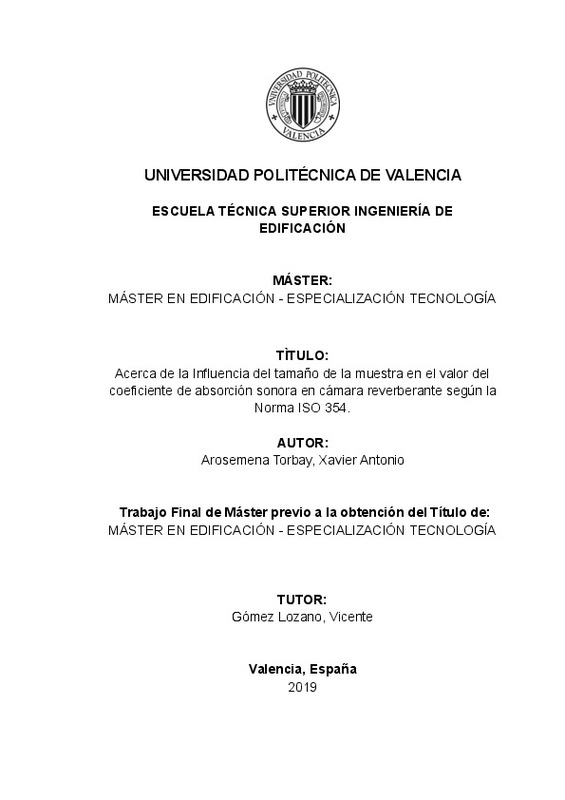JavaScript is disabled for your browser. Some features of this site may not work without it.
Buscar en RiuNet
Listar
Mi cuenta
Estadísticas
Ayuda RiuNet
Admin. UPV
Acerca de la Influencia del tamaño de la muestra en el valor del coeficiente de absorción sonora en cámara reverberante según la Norma ISO 354
Mostrar el registro completo del ítem
Arosemena Torbay, XA. (2019). Acerca de la Influencia del tamaño de la muestra en el valor del coeficiente de absorción sonora en cámara reverberante según la Norma ISO 354. http://hdl.handle.net/10251/128225
Por favor, use este identificador para citar o enlazar este ítem: http://hdl.handle.net/10251/128225
Ficheros en el ítem
Metadatos del ítem
| Título: | Acerca de la Influencia del tamaño de la muestra en el valor del coeficiente de absorción sonora en cámara reverberante según la Norma ISO 354 | |||
| Autor: | Arosemena Torbay, Xavier Antonio | |||
| Director(es): | ||||
| Entidad UPV: |
|
|||
| Fecha acto/lectura: |
|
|||
| Resumen: |
[ES] La determinación del coeficiente de absorción sonora de una muestra, de acuerdo a la Norma ISO 354, se realiza midiendo en primera instancia el
tiempo de reverberación promedio en una cámara reverberante con un volumen ...[+]
[EN] The determination of the sound absorption coefficient of a sample, according to ISO Standard 354, is done by first measuring the average reverberation time in a reverberant chamber with a minimum volume of 150 m3 with ...[+]
|
|||
| Palabras clave: |
|
|||
| Derechos de uso: | Reserva de todos los derechos | |||
| Editorial: |
|
|||
| Titulación: |
|
|||
| Tipo: |
|
recommendations
Este ítem aparece en la(s) siguiente(s) colección(ones)
-
ETSIE - Trabajos académicos [2387]
Escuela Técnica Superior de Ingenieria de Edificación







